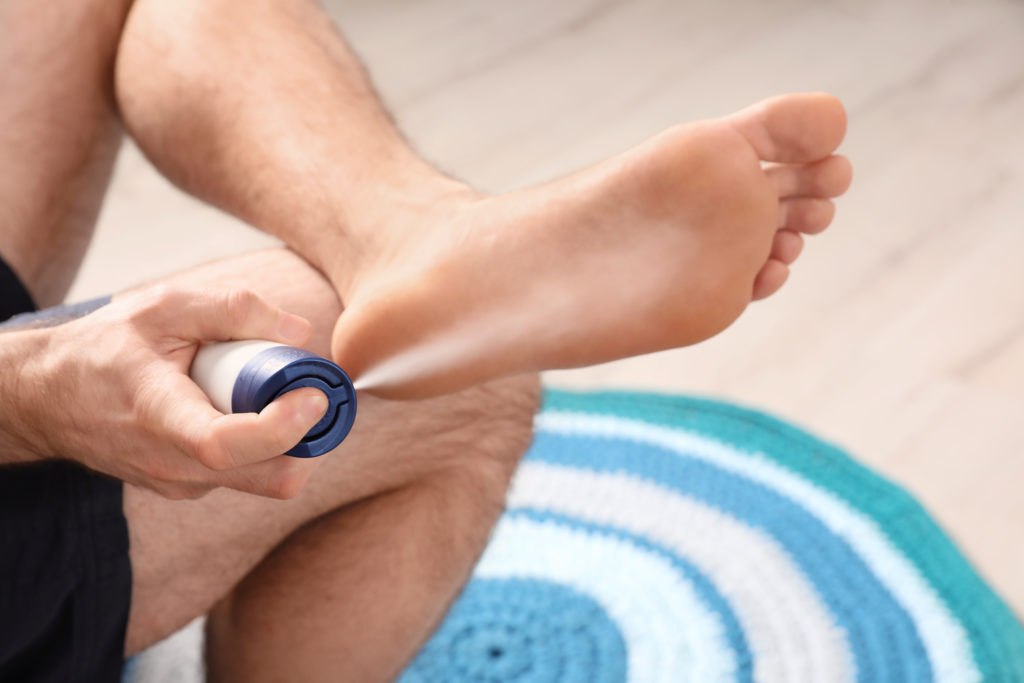Specialist Dermatology Solutions for Treatment of Hyperhydrosis of Hands: Comprehensive Overview
Revealing the Intricacies of Excessive Sweating: A Comprehensive Overview to Diagnosis and Administration
Too much sweating, medically referred to as hyperhidrosis, is a problem that influences a significant number of individuals and can have an extensive influence on their lifestyle. While sweating is a natural bodily feature, its overactivity in hyperhidrosis provides a distinct collection of challenges that commonly go past plain discomfort. Understanding the underlying causes, acknowledging the signs, and browsing the analysis procedure for hyperhidrosis can be complex jobs. In this thorough overview, we will discover the intricacies of hyperhidrosis, from its diagnosis to the variety of therapy alternatives readily available, dropping light on efficient monitoring approaches for those grappling with this condition.

Understanding Hyperhidrosis Causes
Hyperhidrosis creates can be attributed to different factors such as genetics, hormone inequalities, and specific clinical problems. Genes play a considerable duty in key focal hyperhidrosis, where individuals inherit the problem from their household members. By determining the certain factors contributing to extreme sweating, medical care companies can customize therapy plans to deal with the underlying reason, supplying alleviation and improving the high quality of life for individuals affected by hyperhidrosis.
Recognizing Hyperhidrosis Manifestations

Moreover, hyperhidrosis signs and symptoms might materialize in psychological and social distress, as people may really feel self-conscious or nervous about their sweating, bring about avoidance of social situations (Sweaty hands treatment). Furthermore, duplicated episodes of extreme sweating can result in skin maceration, fungal infections, and a total decrease in self-worth
Diagnostic Process for Hyperhidrosis
Initiating the analysis process for extreme sweating involves detailed assessment of the person's case history and checkup. Asking about the onset, period, and triggers of sweating episodes is vital to distinguish in between primary focal hyperhidrosis and second generalized hyperhidrosis. Medical background ought to additionally consist of questions regarding drugs, medical problems, and household background of hyperhidrosis.
Throughout the physical exam, certain attention is paid to the locations influenced by sweating. The healthcare carrier may examine the level of sweating, check for indications of underlying problems, and evaluate the impact of sweating on the person's lifestyle. Additionally, certain examinations like the gravimetric examination, starch-iodine examination, or skin conductance measurements may be carried out to evaluate the quantity of sweat produced.
Moreover, in instances where second hyperhidrosis is believed, added examinations such as blood examinations, pee examinations, and imaging research studies find more info may be suggested to determine the underlying root cause of excessive sweating. The diagnostic process aims to accurately determine the kind and reason for hyperhidrosis to lead ideal monitoring methods.
Therapy Options for Hyperhidrosis
When dealing with excessive sweating, numerous therapy choices are offered to reduce symptoms and improve the person's high quality of life. The treatment approach for hyperhidrosis relies on the extent of signs and the client's response to first treatments.
Topical treatments, such as aluminum-based antiperspirants, are often suggested as the first line of protection for handling mild instances of hyperhidrosis. These products work by connecting the sweat ducts, hence minimizing the amount of sweat that gets to the skin's surface. For people with a lot more severe you can check here signs and symptoms, dental medicines like anticholinergics may be recommended to assist reduce sweating. These medications can have side impacts and are not suitable for every person.

Effective Administration Methods
To properly take care of hyperhidrosis, a customized and extensive treatment strategy customized to the person's certain needs and feedback to previous treatments is dig this important. This plan may incorporate a mix of healing techniques, including lifestyle modifications, topical therapies, dental medicines, botulinum toxin injections, iontophoresis, and in extreme situations, surgical interventions like gland removal or sympathectomy. Lifestyle modifications such as putting on moisture-wicking garments, using antiperspirants, and exercising stress-reducing methods can match clinical treatments. Topical antiperspirants including light weight aluminum chloride are usually the first-line therapy, with stronger solutions offered for immune situations. Oral drugs like anticholinergics may be suggested for generalised hyperhidrosis. Botulinum toxin shots are effective for focal hyperhidrosis, giving momentary relief by obstructing the launch of acetylcholine. Iontophoresis, involving making use of a low electric current to lower sweat gland task, can be useful for both palmoplantar and axillary hyperhidrosis. Surgical options are normally reserved for serious, refractory cases and need mindful consideration of threats and benefits. A multidisciplinary method entailing dermatologists, health care doctors, and, if necessary, specialists, can maximize the management of hyperhidrosis.
Verdict
To conclude, hyperhidrosis is a problem defined by too much sweating, which can substantially affect a person's lifestyle. By recognizing the causes, recognizing the signs, and undergoing the analysis procedure, healthcare companies can effectively manage this problem. Therapy options include topical drugs, dental medications, injections, and also procedures in serious cases. With appropriate medical diagnosis and management approaches, individuals experiencing from hyperhidrosis can discover alleviation and enhance their total well-being.
Extreme sweating, clinically understood as hyperhidrosis, is a condition that influences a significant number of people and can have a profound influence on their top quality of life. By recognizing the particular aspects contributing to excessive sweating, medical care service providers can customize treatment strategies to resolve the underlying cause, using alleviation and enhancing the top quality of life for individuals influenced by hyperhidrosis.
Hyperhidrosis, characterized by excessive sweating past what is required for controling body temperature, can considerably impact a person's top quality of life. Making inquiries concerning the onset, duration, and triggers of sweating episodes is critical to set apart in between key focal hyperhidrosis and second generalised hyperhidrosis. Treatment for hyperhydrosis of hands.In final thought, hyperhidrosis is a problem identified by too much sweating, which can significantly affect a person's top quality of life